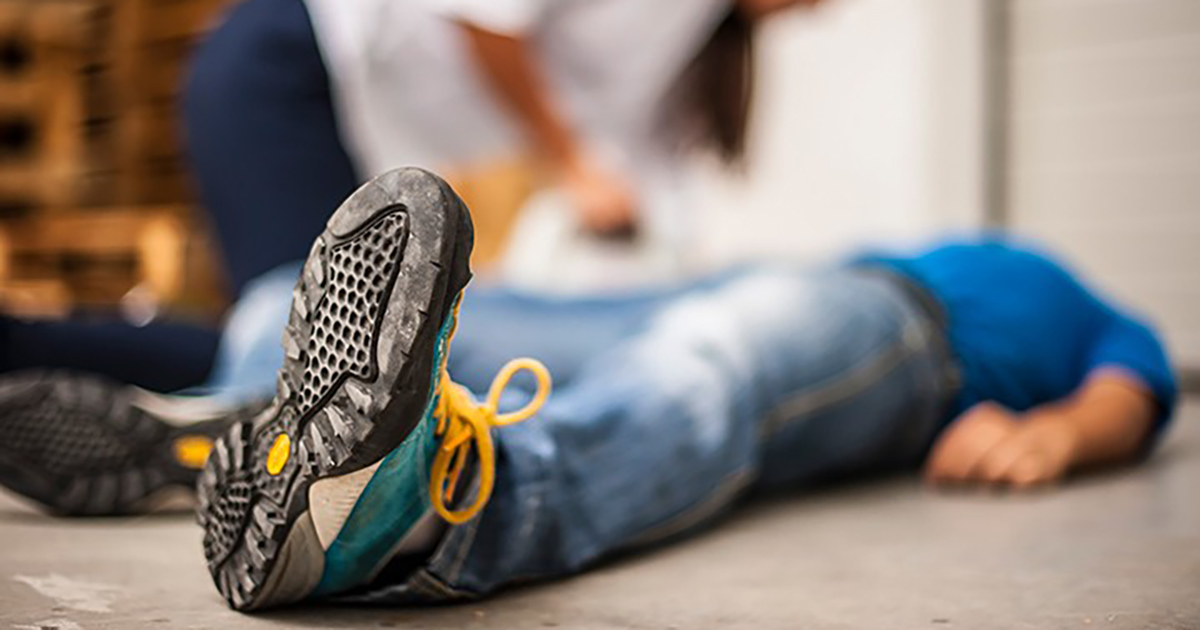Most Common Diabetic Hypoglycemia Symptoms
Diabetic hypoglycemia is the result of the blood sugar of an individual with diabetes going too low. It can make their body begin to shut down. Low blood sugar can have many symptoms. Diabetes patients should always be checking their blood sugar with a meter and test strips. In addition, they should always carry glucose tablets, as these help raise blood sugar quickly. However, if an individual waits too long, they may need medical assistance. Thus, diabetes patients need to know the signs their sugar is going too low and what to do if it happens. Otherwise, there are significant health-related issues that can happen. Here are some of the things to be on the lookout for when blood sugar is too low.
Shakiness And Dizziness

Low blood sugar can often result in shakiness and dizziness. Patients may feel like they need to sit or lie down because they feel dizzy. The dizziness could be very dangerous because it could happen when driving or even walking. If an individual becomes too dizzy, they could fall and hurt themselves. So diabetes patients should make sure to put themselves in a safe place and test their blood sugar if they feel this way. The shaking feeling mimics the sensation of insides vibrating. If blood sugar is too low (under seventy), patients may be able to see the shaking in their hands. Patients will not be able to control it, and it will become worse as their blood sugar keep going down. Once an individual realizes their symptoms may be a sign of hypoglycemia, they need to act because it will just continue to go down and more significant medical situations may occur because of it.
Learn more about the symptoms of diabetic hypoglycemia now.
Difficulty Speaking

Another symptom of hypoglycemia is difficulty speaking. When blood sugar goes too, it can affect the part of the brain that handles speech. As the body cannot function properly, it affects the body in many different ways. Patients may feel like they cannot form words properly and they are slurring their speech. It is important for patients to test their blood sugar if they experience any problems with speech. Difficulty speaking and slurred speech can be an indicator of other serious problems, like a stroke. Therefore, it is important to get checked out by a medical professional. This is especially important because medical emergencies need to be dealt with as soon as possible.
Continue reading to reveal more symptoms of diabetic hypoglycemia now.
Irritability Or Anxiety

Just having symptoms during a period of hypoglycemia can bring on irritability or anxiety. Anxiety often results as patients can feel their body failing them, yet they don't know why. The anxiety can be caused by the other symptoms or be a primary symptom. Furthermore, experiencing blurry vision, slurred speech, or any other symptoms, it can cause irritability as well. An underlying mental or physical condition can cause anxiety and irritability. Therefore, it is important to test blood sugar to either eliminate or confirm it as a result of hypoglycemia. Regardless, it is important to discuss these symptoms with a doctor.
Get the details on more diabetic hypoglycemia symptoms now.
Blurry Or Double Vision

A scary symptom of hypoglycemia is blurry or double vision. Diabetes patients already know high blood sugar can cause vision problems. This happens because the lens of the eye gets swollen and it changes the shape and vision can become distorted. However, with hypoglycemia, this is not the case, and patients should be aware vision changes can happen with both low and high blood sugar. In cases of hypoglycemia, low blood sugar is making it hard for the systems of the body, including the brain, to function properly. So, vision problems are the result of the brain not being able to process and focus on what the eye is viewing. Thankfully, once blood sugar is under control, this symptom usually resolves itself without much medical intervention.
Uncover more symptoms of diabetic hypoglycemia now.
Convulsions Or Seizures

The scariest hypoglycemia symptoms are convulsions or seizures. Patients who experience these symptoms need to make sure to get medical attention immediately. This can be the result of not realizing other symptoms they may have been experiencing. Therefore, the low blood sugar went without treatment, causing a convulsion or seizure. This can result in a loss of consciousness, which is very dangerous. Depending on where the patient is at the time of the seizure, they can cause injury to themselves or others. These seizures can happen out of the blue, with no warning. So, it is important to communicate with a doctor, so they can take measures to try to recognize if a seizure is coming on. But sometimes they can happen with no warning, which is very scary. This is why developing a plan with a doctor is crucial.
Unveil more serious indicators of diabetic hypoglycemia now.
Sweating

During the early stages of diabetic hypoglycemia, patients may notice sweating. The sweating associated with this condition can occur at any time of the day or night, and it may be accompanied by shakiness, anxiety, and hunger. Patients could also develop chills, and the skin may feel clammy and appear pale. Since sweating is an early indicator of potential hypoglycemia, patients who observe this symptom in the absence of hot weather or any other known cause should check their blood sugar immediately. If the results are low or if testing equipment is not available, the patient should err on the side of caution, and home treatment for hypoglycemia should begin. To raise blood sugar, doctors typically recommend individuals eat fifteen grams of carbohydrates. Glucose gel, a tablespoon of honey or table sugar, four ounces of fruit juice, and hard candies are ideal emergency sources of carbohydrate. Fifteen minutes after eating, the patient should recheck their blood glucose levels. These two steps should be repeated until the glucose readings reach 70mg/dL, and patients are advised to eat a meal once glucose readings have stabilized. While sweating can be uncomfortable, it should resolve as blood sugar normalizes. It can be helpful for the patient to keep track of hypoglycemia episodes and symptoms, as this information aids doctors in planning effective treatments.
Read more about the major warning signs of diabetic hypoglycemia now.
Nightmares

Nightmares are a late-stage symptom of diabetic hypoglycemia that could occur for certain patients. The patient may cry out while sleeping, and this can be particularly frightening for family members. Upon waking from the nightmares, patients may feel nervous or irritable, and weakness or drowsiness might be present. Some patients could develop blurred vision or other types of visual disturbances. If the patient believes their nightmares could be due to hypoglycemia, getting out of bed to check blood sugar levels is crucial. If levels are low, patients should remain out of bed and eat a snack containing carbohydrates. Keeping glucose gel or tablets on a bedside table may be helpful in reducing the stress associated with nighttime episodes of diabetic hypoglycemia. Patients should inform their endocrinologist about nightmares and any other mental or neurological disturbances that take place during episodes so medication adjustments can be considered.
Keep reading to learn more about the symptoms of diabetic hypoglycemia now.
Muscle Weakness

Muscle weakness typically begins in the early stages of diabetic hypoglycemia, and it may get worse if the condition progresses to later stages. Patients may be unable to lift or grasp objects, and they could drop items. In the legs, muscle weakness could result in problems standing, walking, or bending, and patients could fall. If the patient suddenly feels weak, they should try to sit or lie down as soon as possible to prevent falls or other injuries. At times, muscle weakness may be accompanied by a fast, pounding heartbeat, and some patients have reported tingling in the mouth. These symptoms typically all resolve once blood sugar has normalized, and the patient may need to rest or lie down for a while after this point to regain strength. After an episode of weakness, the patient should first try to sit up in bed, and if this feels okay, standing is the next step. It is important to stand up slowly, and having something nearby to hold onto is recommended. Ideally, the patient may wish to try walking with someone next to them, just in case some weakness is still present.
Discover additional diabetic hypoglycemia warning signs now.
Confusion

Confusion generally occurs in the later stages of diabetic hypoglycemia. Patients might display an altered mental status; for example, they could be unaware of the date, and they may not remember what they had been doing before the hypoglycemic episode began. It is common for patients with confusion to slur their words, and they may be unable to follow directions or complete their normal tasks. For some patients, confusion may progress to seizures or a loss of consciousness. Since this symptom occurs in the late stages of hypoglycemia, attempting to raise blood sugar through home remedies may not be fast enough, and emergency medical attention should be sought. Emergency medical technicians and hospital staff will administer intravenous glucose or injections of glucagon. Patients who have experienced severe hypoglycemia may be advised to keep a glucagon kit at home for emergency use.
Understand more about identifying diabetic hypoglycemia now.
Increased Clumsiness

Increased clumsiness is a warning sign a diabetic hypoglycemia episode may be getting worse. Patients with this symptom normally have trouble walking; they may sway from side to side or favor one side over the other when walking. They might be unable to walk in a straight line, and they could also be more prone to stumbles and tripping. In the upper body, the patient might drop things like cups, and lightweight objects such as pencils may be difficult to hold. Balance may be affected, and patients may find they need to hold onto walls, furniture, or doors to steady themselves. Individuals with these symptoms should sit or lie down, and their blood sugar reading should be checked. If the readings are low and the patient is not exhibiting slurred speech or confusion, home treatments with glucose gel or tablets may be worth attempting. However, if the patient shows any signs of seizures or other neurological symptoms, the emergency glucagon kit (if available) should be used, and emergency medical attention is essential.